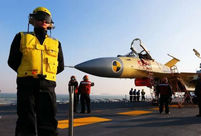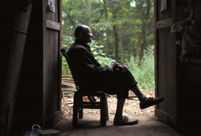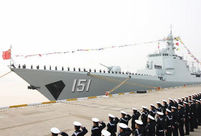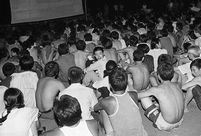 Shocking moments when PLA's weapons open fire
Shocking moments when PLA's weapons open fire Famous Lanzhou beef noodles
Famous Lanzhou beef noodles Armed Police hold anti-terrorism drill in SE China's Xiamen
Armed Police hold anti-terrorism drill in SE China's Xiamen Harbin Int'l Ice and Snow Festival opens
Harbin Int'l Ice and Snow Festival opens 'Jin' named the word of the year by cross-strait netizens
'Jin' named the word of the year by cross-strait netizens Chinese scientific expedition goes to build new Antarctica station
Chinese scientific expedition goes to build new Antarctica station
 Chinese naval escort fleet conducts replenishment in Indian Ocean
Chinese naval escort fleet conducts replenishment in Indian Ocean 17th joint patrol of Mekong River to start
17th joint patrol of Mekong River to start China's moon rover, lander photograph each other
China's moon rover, lander photograph each otherBEIJING, Jan. 9 -- Seven high-speed railways at a combined length of 2,285 kilometers were opened in China on Dec. 28. This brought the total length of the country's operational railways for CRH (China Railway High-speed) trains to more than 10,000 kilometers. The target for 2020 is 18,000 kilometers.
CRH trains have helped shorten traveling times and provided comfort for users. In developing the sector, the country takes a leading role in the world.
President Xi Jinping and Premier Li Keqiang, in separate visits last year to the United States, Southeast Asia and Europe, both cited high-speed rail as an area for international cooperation.
According to a research published last month by Lu Feng, a professor with the school of government at Peking University, the great leap forward of China's railway development in the last decade was achieved with the introduction of foreign technologies. Between 2004-2006, four types of high-speed trains were bought as were production technologies from Canada's Bombardier, Japan's Kawasaki, France's Alstom and Germany's Siemens. Through these deals, Chinese technicians mastered the advanced manufacturing technology.
Rapid progress is also credited to China's own railway research and production capability. Technical personnel took bold steps to develop products of their own. This was a decisive factor, Lu's report said.
A case in point is the CRH380A train manufactured by Qingdao Sifang Co. Ltd, the largest rolling stock production base of China South Railway (CSR). The model is the fastest train in operation in the world. Its highest speed is 380 km/hour. In its initial test run, the train hit 486.1 km/hour.
The train differs from foreign products in four areas: external shape, the framework carrying the wheels, car body sealing, and network control and trailing systems.
Statistics show Qingdao Sifang has delivered 146 CRH380A trains, representing a domestic market share of nearly 50 percent. These trains run on ten railways and have recorded a total safe operation of 160 million kilometers. The off-line launch on Nov.7 of a new CRH380A train, which is tailor-made for the Guangzhou-Shenzhen-Hong Kong railway, was another major event in the company's history.
The China Autonomous Innovation Joint Action Plan of High-Speed Train signed in February 2008 by the Ministry of Technology and the then Ministry of Railways was pivotal in ushering in the present era of independent development.
The government mobilized major railway research and production forces, including 25 universities, 11 research institutes and 51 state-level laboratories and engineering centers. Input between 2006 and 2010 totaled 2.2 billion yuan.
China's more than 10,000 kilometers of high-speed railways, almost doubles the combined length of Europe's and Japan's railways. The Beijing-Guangzhou Railway (2,300 km), the Beijing-Shanghai Railway (1,318 km) and the Harbin-Dalian Railway (921 km), are the three longest high-speed railways in the world.
The Beijing-Shanghai Railway triggered independent development of CSR's CRH380A and China North Railway's CRH380B because no products were on offer from the rest of the world. Innovation was a must when it came to building railways in areas where geographic conditions were harsh, such as the Harbin-Dalian Railway, which runs on high-latitude frozen soil. China's railway achievements in these areas were pioneering and original.
The whole package was world leading, whether in railroad construction, equipment designing and manufacturing, or vehicle operations and maintenance, said Wang Mengshu, a railway expert and an academician of the Chinese Academy of Engineering. "It's like the Swiss watch. When talking about high-speed railway, people look to China," he added.
However, China still relies on imports for braking systems.
A railway expert who preferred not to be named said China was capable of developing braking systems for high-speed trains. Yet, apart from cost, there was another concern. Safety or rather, the responsibility for operational safety.
The country's railway operators and passengers still remember an accident that happened on the evening of July 23, 2011, when two CRH trains collided on the newly opened Ningbo-Wenzhou Railway. The pileup caused four carriages of the front train to derail, killing 40 people and injuring 172 others.
Inadequate emergency response and poor handling of the accident were strongly criticized. It cast doubt on the safety levels of the country's rapidly developing high-speed railways.
The investigation, in which academician Wang served as deputy chief of the expert team, reported 120 days later that the Wenzhou accident was more a result of erroneous management than technical deficiency. But the report failed to deliver a clear message. The negative impact was huge, especially on the overseas market.
The CRH380A train was designed according to international standards and in some areas even stricter, said Deng Xiaojun, deputy chief engineer of Qingdao Sifang. "We have a rounded mechanism to ensure the train's safety operation," Deng said.
China's high-speed railways have been built largely on elevated constructed land bases, which has helped avoid derailments and made maintenance easy. The train's signaling and braking systems were also effective in preventing collisions, said Wang. "Currently our CRH trains run at a normal, regular interval of six minutes on the same line. With subway trains, this is reduced to two minutes. We are very confident in the operational safety of our railway system," he said.
 Chinese Consulate General in S.F. burned for arson attack
Chinese Consulate General in S.F. burned for arson attack Roar of J-15 fighter is melody for operator on the Liaoning
Roar of J-15 fighter is melody for operator on the Liaoning A 90-year-old forester's four decades
A 90-year-old forester's four decades Most touching moments in 2013
Most touching moments in 2013 2013: Joys and sorrows of world politicians
2013: Joys and sorrows of world politicians Missile destroyer Zhengzhou commissioned to Chinese navy
Missile destroyer Zhengzhou commissioned to Chinese navy China is technically ready to explore Mars
China is technically ready to explore Mars Photo story: Life changed by mobile technology
Photo story: Life changed by mobile technology Bullet train attendants' Christmas Eve
Bullet train attendants' Christmas Eve Shocking moments when PLA's weapons open fire
Shocking moments when PLA's weapons open fire Barnier: China, EU should travel side by side on the road of reform
Barnier: China, EU should travel side by side on the road of reform 'Phubbing' people seen everywhere
'Phubbing' people seen everywhere China's bun brand to buy American coffee giant
China's bun brand to buy American coffee giant Yang Mi, Hawick Lau hold wedding in Bali
Yang Mi, Hawick Lau hold wedding in Bali Snowy, milky, cheesy Fribourg of Switzerland
Snowy, milky, cheesy Fribourg of SwitzerlandDay|Week|Month